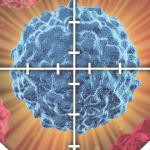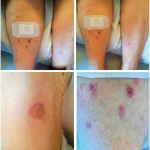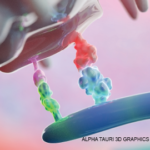Dr. Sullivan said toxicities typically occur within the first four to 12 weeks, and the first symptoms of fatal toxicities typically develop within five or six weeks.
Keys to an Effective T Cell Response
Dr. Sullivan said the first step in using activated T cells to kill cancer cells is antigen recognition by the T cell receptor—recognizing an antigen that is being expressed by an antigen-presenting cell in the context of major histocompatibility complex genes that code for proteins found on the surfaces of cells to aid the immune system in recognizing foreign substances. The second step is co-activation. “There are a number of cell surface markers on the antigen-presenting cell and on the T cell that interact with each other and steer a reaction toward T cell activation.” These activated T cells infiltrate the tumor and then interact with the cancer and, ideally, kill the cancer cells. But the cancer cells also respond to the threat presented by the activated T cells.
Dr. Sullivan pointed out that CTLA-4 is critical for T cell priming and activation, and plays a crucial role in regulatory T cell function. “There’s also PD-1 [programmed cell death protein 1], a marker of T cell activation. It serves as a key regulator of active cells in the immune microenvironment,” said Dr. Sullivan.
Growing Approval
The first immune checkpoint inhibitor approved by the U.S. Food & Drug Administration (FDA) was in 2011. Since then, the number has increased, with five approved in 2016, 10 in 2017, 12 in 2018 and seven in 2019. They’re treating a variety of malignancies and include one CTLA-4 blocker, three PD-1 inhibitors, three PD-L1 inhibitors and one combination. “We’re seeing more combinations of therapies being approved, including combinations with chemotherapy,” said Dr. Sullivan.
While other types of cells can be involved in immunotherapy, including B cells, Dr. Sullivan said most of the magic in immunotherapy is about the T cell.
Dr. Weber, on the other hand sees a great deal of promise with B cells. “I’m convinced that antibodies and B cells are implicated in immune-related adverse events. Do I see it as a possible biomarker? Absolutely. I used to be a T cell chauvinist; now I’m a B and T cell chauvinist.”
In Search of Biomarkers
Dr. Weber says a key part of current research is investigating biomarkers to predict whether significant irAEs may occur, but that the irAEs may themselves be a biomarker. “There’s research showing that the onset of irAEs in some histologies appears to be associated with a favorable outcome.”



